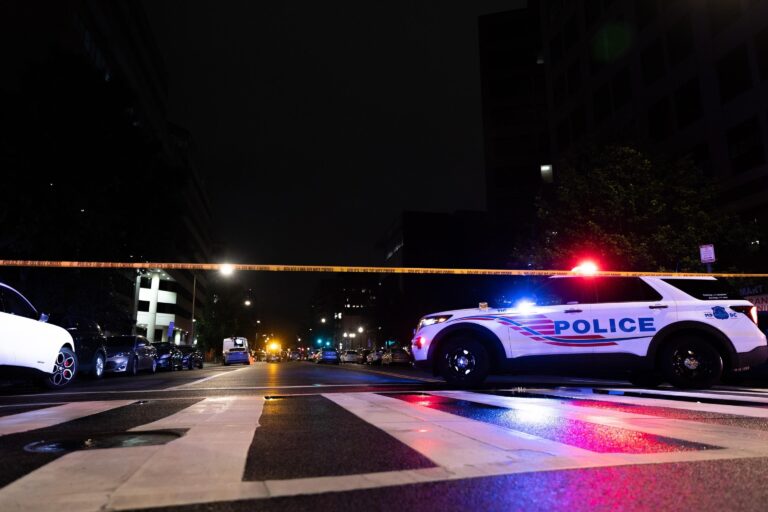Understanding Crime Dynamics and Safety Perceptions in Washington, DC
Recent Crime Patterns in Washington, DC: An In-Depth Analysis
Latest data from the Metropolitan Police Department of Washington, DC, paints a multifaceted portrait of crime within the city. Although there has been an overall 7% reduction in violent crimes compared to the previous year, specific offenses such as aggravated assaults and vehicle hijackings have experienced notable increases. Property-related offenses have also seen a slight decline, indicating some effectiveness of targeted policing and community initiatives. The Southeast and Northeast sectors remain hotspots, underscoring ongoing socio-economic disparities that contribute to crime concentration.
Despite these encouraging statistics, public sentiment about safety remains divided. Surveys reveal that 42% of residents continue to feel uneasy when walking alone at night in certain districts. This unease is fueled by visible drug activity and concerns over emergency response times. Community advocates emphasize the necessity of transparent communication and strengthened partnerships between law enforcement and citizens to rebuild confidence and enhance neighborhood security.
- Overall violent crime reduction: 7%
- Increase in aggravated assaults: 12%
- Rise in carjacking incidents: 9%
- Decrease in property crimes: 3%
- Residents reporting feeling unsafe: 42%
| Crime Category | Percentage Change | Most Impacted Areas |
|---|---|---|
| Violent Crime | -7% | Southeast & Northeast Wards |
| Aggravated Assault | +12% | Northeast & Southeast Wards |
| Carjackings | +9% | Southeast Wards |
| Property Crime | -3% | Citywide |
Neighborhood Safety: How Residents Experience Security in DC
Feelings of safety in Washington, DC vary significantly by location and time, with many residents expressing confidence in law enforcement during daylight hours but apprehension after dark. Eastern and southeastern neighborhoods report the lowest levels of perceived safety, highlighting the persistent challenges these communities face beyond crime statistics alone. Social determinants such as economic hardship and infrastructure deficits play a crucial role in shaping these perceptions.
Residents have identified several key issues affecting their sense of security:
- Poorly maintained or insufficient street lighting that increases vulnerability during nighttime
- Growing incidents of minor thefts and vehicle break-ins that heighten caution among locals
- Reported delays in emergency services that undermine confidence in rapid assistance
| Neighborhood | Percentage Feeling Safe After Dark | Incidents Reported per 1,000 Residents |
|---|---|---|
| Capitol Hill | 78% | 15 |
| Anacostia | 42% | 48 |
| Dupont Circle | 85% | 12 |
| Silver Spring (MD border) | 69% | 29 |
Why Public Fear Often Outpaces Actual Crime Rates in DC
Although crime statistics in Washington, DC have shown a downward trajectory in many categories over the past five years, the public’s fear of crime remains disproportionately high. This gap between perception and reality is influenced by several factors, including media portrayal, personal anecdotes, and community discourse. High-profile incidents, even if isolated, tend to dominate headlines and social media, amplifying anxiety among residents.
Several elements contribute to this mismatch:
- Media Amplification: Sensational reporting on violent crimes can skew public understanding of overall safety.
- Community-Law Enforcement Relations: Distrust or limited engagement with police can exacerbate feelings of insecurity and reduce crime reporting accuracy.
- Economic and Social Stressors: Neighborhoods facing financial hardships often experience elevated fear levels, independent of actual crime trends.
| Indicator | Change Over 5 Years | Public Fear Level |
|---|---|---|
| Violent Crime | Decreased by 12% | High |
| Property Crime | Decreased by 8% | Moderate |
| Overall Safety Perception | No significant change | Low |
Strategic Approaches to Strengthen Safety and Community Confidence in DC
Building safer neighborhoods in Washington, DC requires a holistic strategy that integrates community involvement with innovative policing and social support systems. Prioritizing community-oriented policing can enhance trust through consistent interaction and accountability. Technological advancements, such as energy-efficient smart lighting and discreet surveillance systems, can deter criminal activity while respecting privacy. Moreover, investing in youth development and mental health services addresses the root causes of crime, offering constructive alternatives and early intervention.
Effective policy measures should encompass:
- Establishment of community advisory councils to incorporate resident input in safety planning
- Data-informed allocation of law enforcement resources focusing on identified crime hotspots
- Transparent and frequent public updates on crime statistics and safety initiatives
- Comprehensive victim support programs providing legal aid and counseling
| Focus Area | Primary Action | Anticipated Outcome |
|---|---|---|
| Community Policing | Expand foot patrols and liaison officers | Enhances trust and responsiveness |
| Technological Enhancements | Deploy smart lighting and surveillance | Reduces crime with minimal privacy concerns |
| Youth Programs | Increase after-school and mentorship opportunities | Lowers youth crime involvement |
| Transparency | Regular publication of crime data | Builds public awareness and accountability |
Final Thoughts on Crime and Safety in Washington, DC
In summary, while crime statistics in Washington, DC indicate certain positive trends, the public’s perception of safety often tells a different story. Bridging the gap between data and lived experience is essential for crafting policies that effectively address both crime and community concerns. As the city continues to develop, sustained analysis, open communication, and collaborative efforts will be vital in creating safer, more resilient neighborhoods for all residents.







